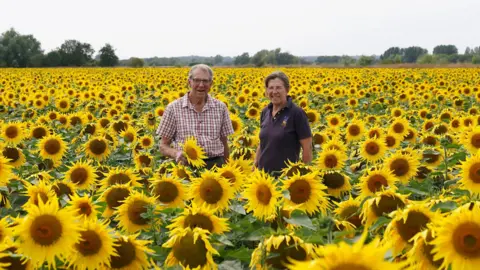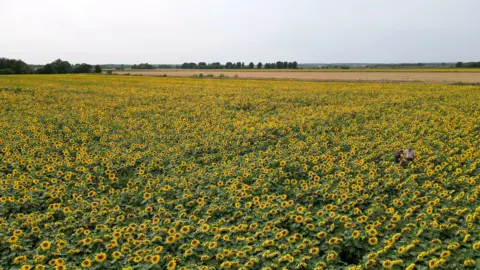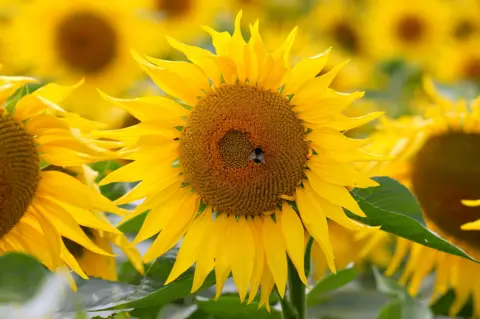 PA Media
PA MediaA sunflower farmer says her crop has been helped by hot and dry conditions, but the changing climate means farms need to diversify to survive.
Lucy Taylor, manager at Vine House Farm in Deeping St Nicholas, near Spalding, Lincolnshire, grows about 1.5 million sunflowers a year for use in bird feed.
The fifth-generation grower said that because of “varied weather and politicians”, farmers have to find new ways of becoming economically viable.
“It’s been a very dry year here – dry and hot, especially in the early part of the summer – and that’s really benefited our sunflower crop,” Ms Taylor said.
“But the last couple of years we’ve struggled with the wet, too much rain.”
 PA Media
PA MediaVine House Farm grows crops that thrive in different conditions, such as wheat, barley, potatoes and sugar beet, so “we’re not just reliant on one product”, Ms Taylor said.
“I think every farm is going to have to diversify and become broader or specialise in what it does to make sure it’s economically viable going forward.”
The sunflower fields have become a visitor attraction, with people taking farm tours for days out.
“I think our sunflowers are a perfect example of how we’ve diversified,” she said.
“It’s that broad spectrum that I think will help farmers going forward.”
 PA Media
PA MediaThe sunflowers are normally harvested in October by combine.
“We like to think they’ll be right at the start of October this year, or maybe even late September,” Ms Taylor said.
The field is colourful because they are being grown for seed, so they do not need to be cut early.
“When you’re cropping sunflowers for flowers, you want them to look the best for the customer, not in your field, so they’ve already cut them before they become a beautiful sea of yellow,” Ms Taylor said.




